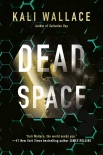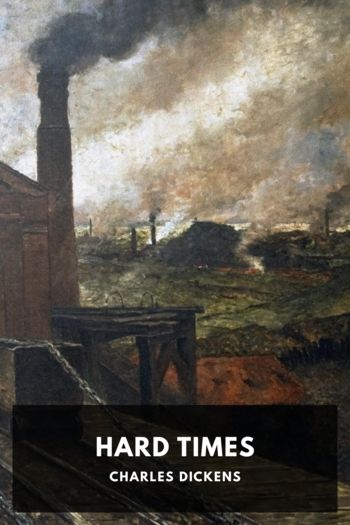Dead Space Kali Wallace (best non fiction books to read txt) 📖

- Author: Kali Wallace
Book online «Dead Space Kali Wallace (best non fiction books to read txt) 📖». Author Kali Wallace
We ran to the end of the catwalk and made a left turn to approach the base of a tall ladder. Hunter climbed first, with me right behind her. I grabbed the rungs and pulled myself up, fear making my motions awkward, unsteady, my nerves jumping every time the alarm wailed. I was shaking so much that I missed a rung with my boots and swung free. My heart skipped wildly and I let out a startled yelp—I was only holding on with one hand, my left hand, and that felt like holding on with nothing at all. Something caught my leg—Adisa, grabbing my ankle—and moved my right foot back to the rungs.
“We have time,” he said. I hated how calm he sounded, how frantic I was in comparison. “You’re okay, yeah?”
The ladder was a good fifteen or twenty meters long, but we finally, finally, reached the top. Hunter pushed the hatch open and climbed inside, then turned to help me up. Adisa was right behind me. He scrambled into the room and slammed the hatch shut. In the space between the alarms came the solid clank of the locks engaging.
SIXTEEN
The furnace stretched before us, a glowing red throat of impossible size. The cylinder was largely empty, but in the distance little bursts of light appeared and vanished, like matter and antimatter meeting at the dawn of the universe. Each light sketched a faint tail of dust, a phantom track through the fierce red space, hundreds of meters above us.
A wave of vertigo made the room spin around me. We were below the furnace—this room was turned the wrong way—we had to be looking up from the floor—we weren’t even in the center of the level—it wasn’t a window. Fuck. I closed my eyes to reorient my brain. Stupid, stupid, stupid. It wasn’t a window. This was a shielded control room; the walls probably contained two meters of solid lead. I was looking at a wallscreen that provided a view down the long axis of the furnace. It helped to know that, but only a little. I was still dizzy and nauseated, and the room was so warm sweat sprung to my brow.
I tore my gaze away from the red furnace and looked around for the room’s main terminal. I asked the Overseer to identify the location of the high radiation levels. Asked for the report on what had triggered the lockdown. Asked for an assessment of station-wide danger. I asked again. And again, and again.
I got nothing. To every query, the Overseer simply replied in text what it had been saying aloud: The station is being placed on lockdown due to the potential for exposure to harmful radiation. The stubborn answer made no sense. The Overseer should be providing unrestricted information about the source of the danger to anybody who asked. All personnel must find their way to a safe room immediately.
Nothing else.
“There’s no internal report on what triggered the lockdown or where it happened. None of the radiation sensors are showing high readings.”
“What? No, that can’t be right. Let me look,” Hunter said.
But even as I moved aside, the terminal stopped responding. The warning was frozen on the screen: The station is being placed on lockdown due to the potential for exposure to harmful radiation. All personnel must find their way to a safe room immediately. I checked the next terminal over, where the comms were patched through, and found the same thing.
Adisa tried his radio again. “Hugo, Avery, what’s happening on your end?”
“I don’t understand,” Hunter said. “What’s wrong with it?”
“They can’t hear you,” I said. The room’s comms didn’t even acknowledge the radio signal, much less pick up and transmit it.
Normal lockdown procedure did not include disabling comms. Not ever, not in any circumstance. No Overseer or station designer wanted to prevent people from communicating during an emergency. But that was our reality: we had no way of contacting the others. We could not see what was happening outside the room. We were stuck in the furnace control room with no way out. My chest felt tight; my heart was racing. There wasn’t enough air. It was too hot. I needed to breathe. It was a small room, and completely sealed. I couldn’t breathe. I couldn’t think of anything to do. There was nothing we could do, not without a way to make the Overseer listen to us. Not deep in the mine, three kilometers from help.
The red light from the furnace faded as the image on the wallscreen vanished.
A second later, all the screens around us went dark. The overhead lights went out. Every indicator light in the room, on every panel, switched from green or blue or white to red. Aside from the glow of my PD screen—now registering an error as it tried and failed to talk to the station—that faint red glow, from so many tiny specks, was the only light in the room.
A bright light flared across the room. I flinched, then recovered to see Adisa brandishing a small flashlight. He aimed it up and around, searching for something, before finally settling on a ventilation panel near the ceiling. He boosted himself up on one of the terminals to reach upward. I didn’t understand what he was doing—my fear was clouding every thought—until he held his hand in front of the panel for a few moments.
“The air’s still flowing, aye?”
As soon as he said it, I could hear it: the faint, steady hiss of the ventilation trundling along uninterrupted. Relief washed over me, followed by embarrassment for letting myself spiral into panic. I made myself think about it logically. The life support systems were still functioning; they wouldn’t stop working because the Overseer engaged a lockdown. Even if the Overseer was shut down or destroyed—and I had no reason to think it was—there were multiple fail-safes to keep vital systems running, including everything from less advanced AIs to





Comments (0)